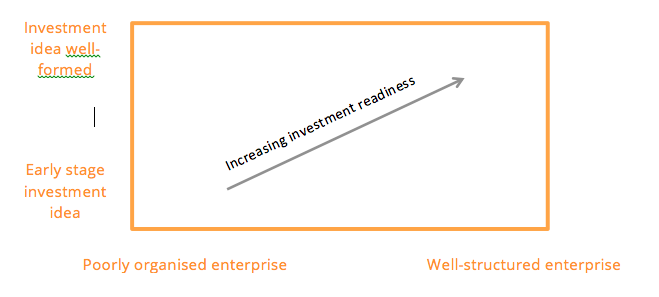Investment readiness: one-size-doesn't-fit-all
It's a term used often in the social investment sphere, but what does investment readiness really mean? Sarah Chu, investment associate at Numbers4Good decodes the jargon and offers helpful tips and advice for enterprises considering taking on social investment.
Investment ready. A seemingly innocuous pair of words that have taken on great weight within the social investment sector, harking to an aspirational state for those charities and social enterprises that are primed and ready to take on investment.
But wait, what does this aspirational state actually look like? And how do charities and social enterprises achieve it? Well, there’s no certificate of ‘investment readiness’ nor, indeed, is there a one-size-fits-all approach to investment readiness. Just as types of investment, social or not, vary greatly – so too must the type of preparation.
So where should social enterprises get started? Well, the natural starting point is to consider whether social investment is actually suitable for your organisation. Whilst social investment may provide a new source of funding for your organisation it is not an outright replacement for grants (or donations) as the finance will need to be repaid. It may, however, be useful for organisations that have a timing mismatch between spending now (for example to replicate an intervention) and income later.
If you decide that social investment is right for your organisation, and it’s worth stressing here that it’s not right for every organisation, then this diagram may be a useful tool to understand how much preparation you need and in which specific areas.

We’ve plotted two sides to our box – how well developed the idea is that you’re seeking investment for, and how appealing the organisation itself is for investors. That aspirational state of being perfectly ‘investment ready’ mentioned earlier is around the top right hand corner of the box: here, you have a well formed, and tested, idea for investment and your organisation has strong management structures.
However, there are plenty of social investors who invest elsewhere in the box, for example if they are seeking to take more risk on a less-well formed idea because it may have a greater social impact.
Case study: Bea’s Bakery*
Bea’s Bakery sells tasty baked goods at weekend food markets and uses the profits to run cooking classes for local children, where they also learn about nutrition. Bea has been running this for over 3 years and her classes are really popular in the local community centre. At the moment Bea does her baking from home and hires a couple of people to help at the classes and the food stall. She would like to raise investment to rent a bakery space and to take the classes to more communities.
Where on the box does Bea fit? Well, it sounds like her idea is pretty well developed and has been tested successfully for over three years. However, Bea doesn’t have a registered legal structure, official employees or any formal reporting (either financial or impact). Investors may be interested in the idea but are likely to ask Bea to build out more infra-structure before they invest, however they may help her to do this!
Self reflection
- Not to put you in a box but…Perhaps your organisation is in the bottom right hand corner?
Your organisation is well established and has a clear governance structure, strong management and established financial and impact reporting but you would like to raise investment for an entirely new product or service. Your next steps may be building out the investment idea – for example using market research to understand who your potential customers are, or even running pilot projects.
Helpful hints: start by speaking to the types of people that may be your customers to see how your idea meets their need and how much they think they would pay for it.
- Perhaps your organisation is in the top left hand corner?
You have a clearly defined product or service for investment, with proven market research and successful pilots. However, your enterprise doesn’t yet have a legal structure, lacks governance (or even employees) or doesn’t have any financial reporting. Your next steps will be to start building these features, as they may be important for investors who want to understand how well you will manage their investment.
Helpful hints: start chatting to people about how best to build these out, for example Eventbrite advertises a whole host of advice sessions by specialist in these areas or perhaps check out a skills-swap website to find the expertise you need.
*Bea’s bakery isn’t a real social enterprise, I’ve just used this case study to bring the diagram to life…but if I could bake I would be tempted to start it up!
The NatWest SE100 Index is an online listing of social ventures, ranked and scored according to their growth and social impact. The live market intelligence platform is designed to provide a substantial data resource for investors, commissioners and policymakers as they seek to understand the landscape of the social economy and identify top performers across the UK. To find out more, click here.
Photo credit: Tom Harle
